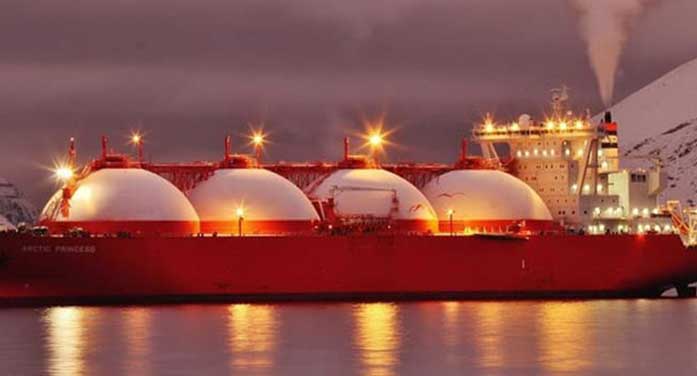 Canadian natural gas is finding its way to global customers desperate for more LNG, but it’s not because of any export project on Canada’s coasts.
Canadian natural gas is finding its way to global customers desperate for more LNG, but it’s not because of any export project on Canada’s coasts.
Instead, the supply is taking off on ocean tankers as part of the mix from liquefied natural gas (LNG) terminals in the United States, according to Deloitte Canada.
“It appears that every spare cubic foot of Canadian natural gas that’s not being used for domestic consumption is being exported to the United States for LNG export,” analysts wrote in Deloitte’s July oil and gas market outlook.
U.S. transport of LNG to Europe is surging in the wake of Russia’s invasion of Ukraine.
Before the invasion, Europe relied on Russia to meet about 40 per cent of its natural gas demand. The European Commission now aims to reduce its use of Russian natural gas by two-thirds this year and eliminate it entirely “well before” 2030.
In the first four months of 2022, LNG imports from the United States to the European Union and the United Kingdom more than tripled compared with 2021, according to the U.S. Energy Information Administration (EIA). Seventy-four per cent of U.S. LNG exports have gone to Europe so far this year.
Thanks to an extensive interconnected pipeline network, U.S. LNG exports can include natural gas from Canada.
| RELATED CONTENT |
| Canada missing a critical opportunity in the LNG market By Mark Milke and Ven Venkatachalam |
| How Canada can help with the world’s growing LNG shortage By Deborah Jaremko |
| The hazards of pursuing a green power utopia By Gwyn Morgan |
The largest U.S. LNG exporter, Cheniere Energy, has long-term supply deals with two Canadian natural gas companies.
Cheniere was first out of the gate for major U.S. LNG export projects, starting up the Corpus Christi facility in south Texas in 2018. Plans for the project were announced in 2010, about one year before Shell and its partners announced plans for the LNG Canada project.
Fast forward to today, and the U.S. is now neck and neck with Qatar as the world’s largest LNG supplier, with eight operating export terminals. Canada’s first LNG export terminal is still being built.
Last year, Calgary-based natural gas producer Tourmaline Oil announced a 15-year supply agreement with Cheniere Energy for LNG exports, to start in 2023. The company struck a similar 15-year supply deal with Calgary-based ARC Resources in May 2022, to start in 2027.
ARC Resources is also a partner in the proposed Ksi Lisims LNG project on the B.C. coast, along with the Nisga’a Nation, six other Canadian natural gas producers and a U.S.-based LNG developer. The project is one of four in development on Canada’s West Coast, including the LNG Canada project under construction and expected to go into service in 2025.
World demand for natural gas and LNG is expected to continue rising through 2050, according to the International Energy Agency. Russia’s invasion of Ukraine adds a layer of uncertainty to an already tight market that Canada could help fill.
World LNG use was already expected to nearly double between 2021 and 2040, crossing 700 million tonnes, according to Shell’s latest industry outlook.
The demand growth is so strong that Shell anticipates by the mid-2020s there will be a shortfall in supply.
Expansion of LNG in Canada could spark an employment wave that rolls across the country over the long term, according to a 2020 report by the Conference Board of Canada.
In a scenario based on relatively conservative expansion, the Conference Board estimated that Canadian LNG could support 96,550 direct, indirect and induced jobs annually across the country between 2020 and 2064.
“Post-pandemic, the Canadian economy will need stimulus. An LNG industry brings long-term investment and production that can contribute to the country’s economic recovery,” the Conference Board said.
LNG development in Canada should be prioritized and accelerated to improve world energy security and help reduce emissions while providing benefits for Canadians.
Deborah Jaremko is director of content for the Canadian Energy Centre, an Alberta government corporation funded in part by taxes paid by industry on carbon emissions.
For interview requests, click here.
The opinions expressed by our columnists and contributors are theirs alone and do not inherently or expressly reflect the views of our publication.
© Troy Media
Troy Media is an editorial content provider to media outlets and its own hosted community news outlets across Canada.

